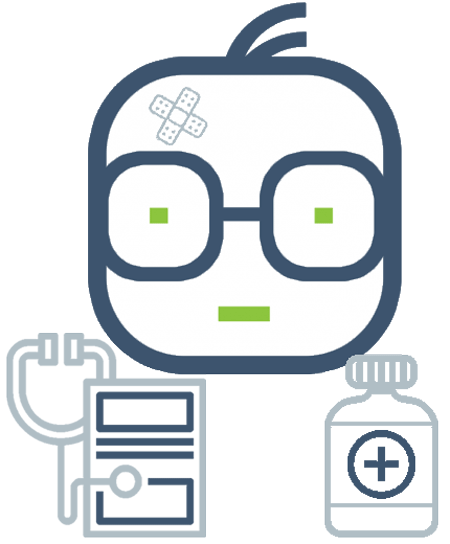According to the recommendations of the American College of Surgeons Committee on Trauma, which of the following patients should be transported to a trauma center?
- Fifty-year-old female who fell 8 feet from a step ladder, with isolated hip fracture and normal vital signs.
- Fifteen-year-old bicyclist with closed head injury and Glasgow Coma Scale score of 12.
- Twenty-three-year-old male assault victim with stab wound to the back, normal vital signs, and respiratory distress.
- Three-year-old infant passenger (restrained) in motor vehicle accident with normal vital signs and no apparent injuries except abdominal wall contusion.




 Medicine
Medicine
B. Fifteen-year-old bicyclist with closed head injury and Glasgow Coma Scale score of 12
C. Twenty-three-year-old male assault victim with stab wound to the back, normal vital signs, and respiratory distress.
D. Three-year-old infant passenger (restrained) in motor vehicle accident with normal vital signs and no apparent injuries except abdominal wall contusion.
DISCUSSION: The American College of Surgeons Committee on Trauma has developed a field triage decision scheme to help identify trauma victims with a significant risk of dying as a result of their injuries. This classification is based on four factors: (1) abnormal physiologic signs, (2) anatomic area of injury, (3) mechanism of injury, and (4) concurrent or co-morbid disease states. Major physiologic abnormalities include a Glasgow Coma Scale score of less than 13, systolic blood pressure less than 90 mm. Hg, respiratory rate less than 10 or greater than 29 per minute, or a Revised Trauma Score of less than 11 or a Pediatric Trauma Score of less than 9. Significant anatomic considerations include penetrating injuries to the torso, head and neck, and proximal extremities, flail chest, combination of trauma with burns to greater than 10% of body surface area, two or more proximal long bone fractures, pelvic fractures, paralysis, or traumatic amputation above the wrist or ankle. Significant mechanisms of injury include a death in the same passenger compartment or ejection from the automobile, high-impact (greater than 5 miles per hour) auto-pedestrian injuries, or a pedestrian thrown or run over. The co-morbid factors include pediatric or elderly (<5 or >55) patients or known history of insulin-dependent diabetes or cardiac, respiratory, or psychotic disorders. These criteria should serve as guidelines for medical control and the pre-hospital care providers. Such triage guidelines have been shown to produce the triage of only a small fraction (5% to 10%) of all injured patients to Level I or Level II trauma centers.
need an explanation for this answer? contact us directly to get an explanation for this answer